 Image 1 of 20
Image 1 of 20

 Image 2 of 20
Image 2 of 20

 Image 3 of 20
Image 3 of 20

 Image 4 of 20
Image 4 of 20

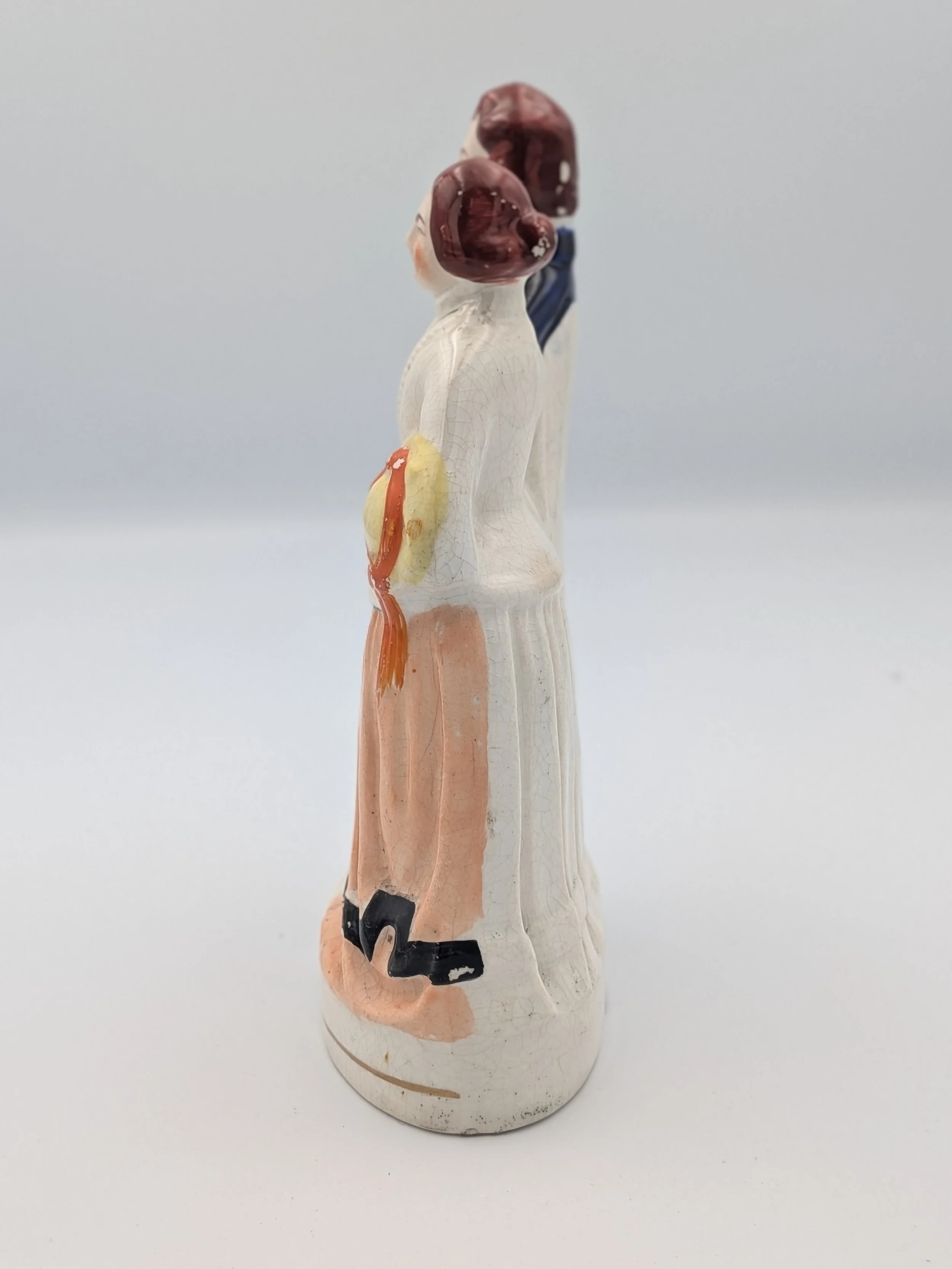 Image 5 of 20
Image 5 of 20

 Image 6 of 20
Image 6 of 20

 Image 7 of 20
Image 7 of 20

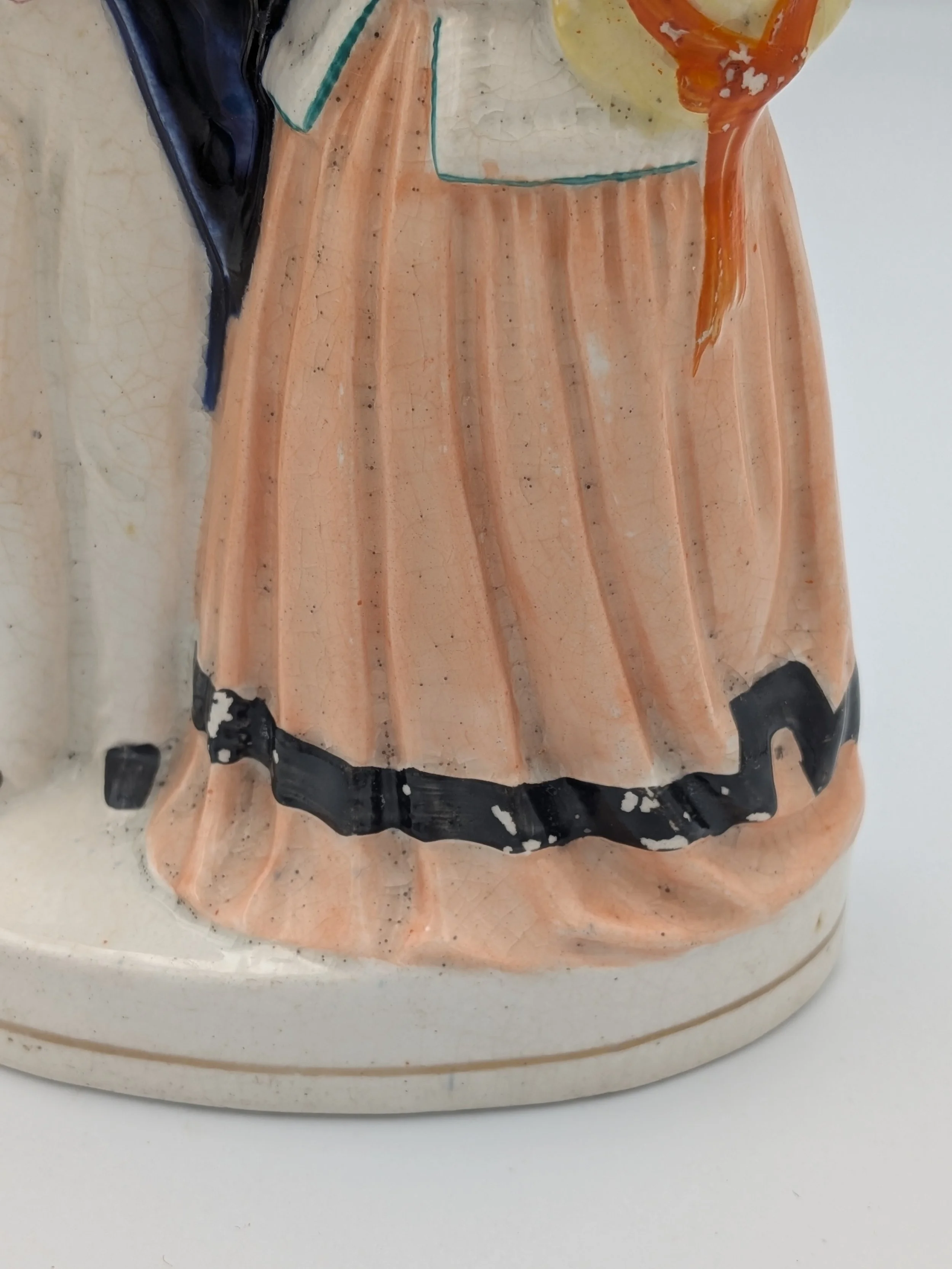 Image 8 of 20
Image 8 of 20

 Image 9 of 20
Image 9 of 20

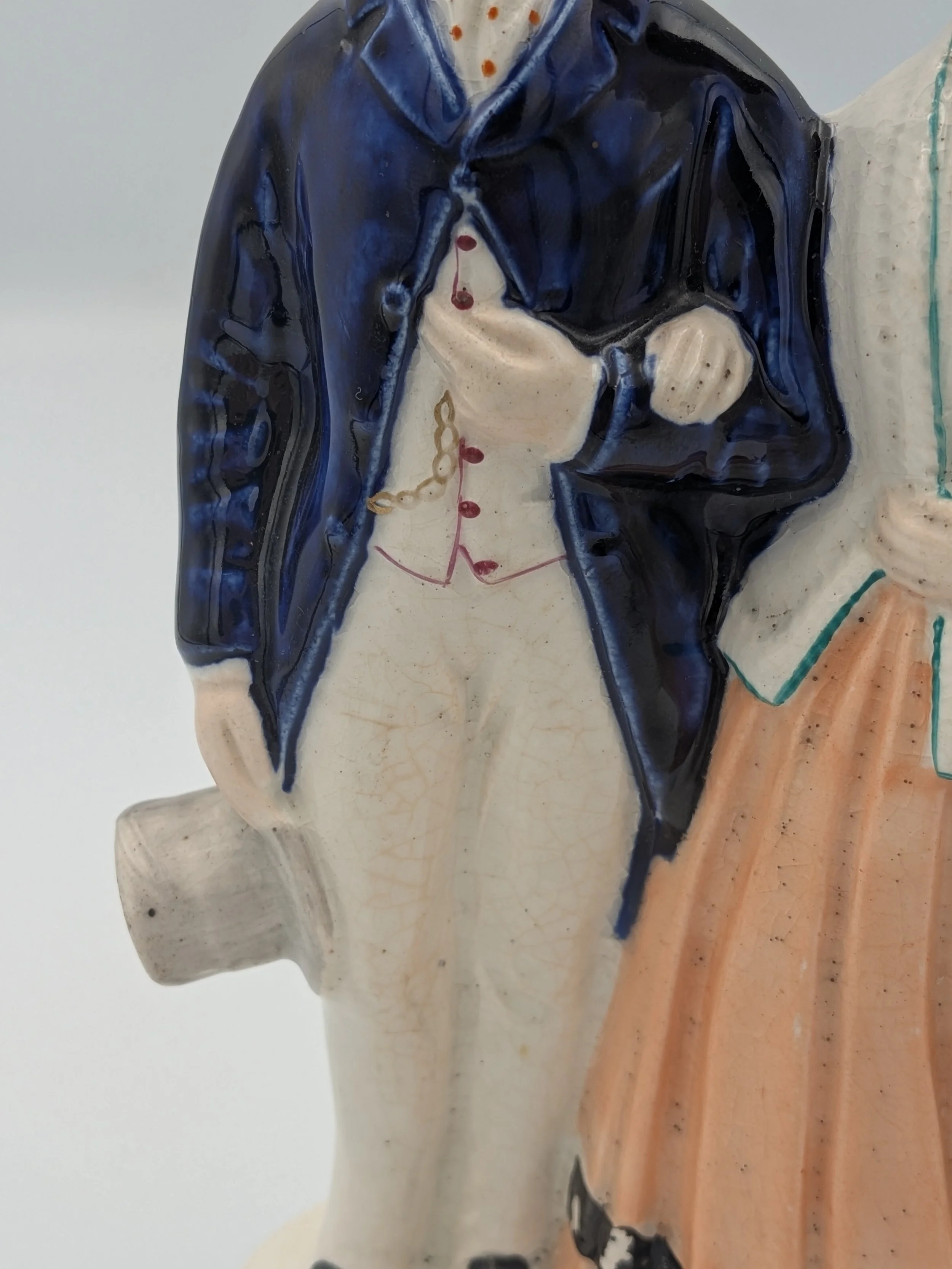 Image 10 of 20
Image 10 of 20

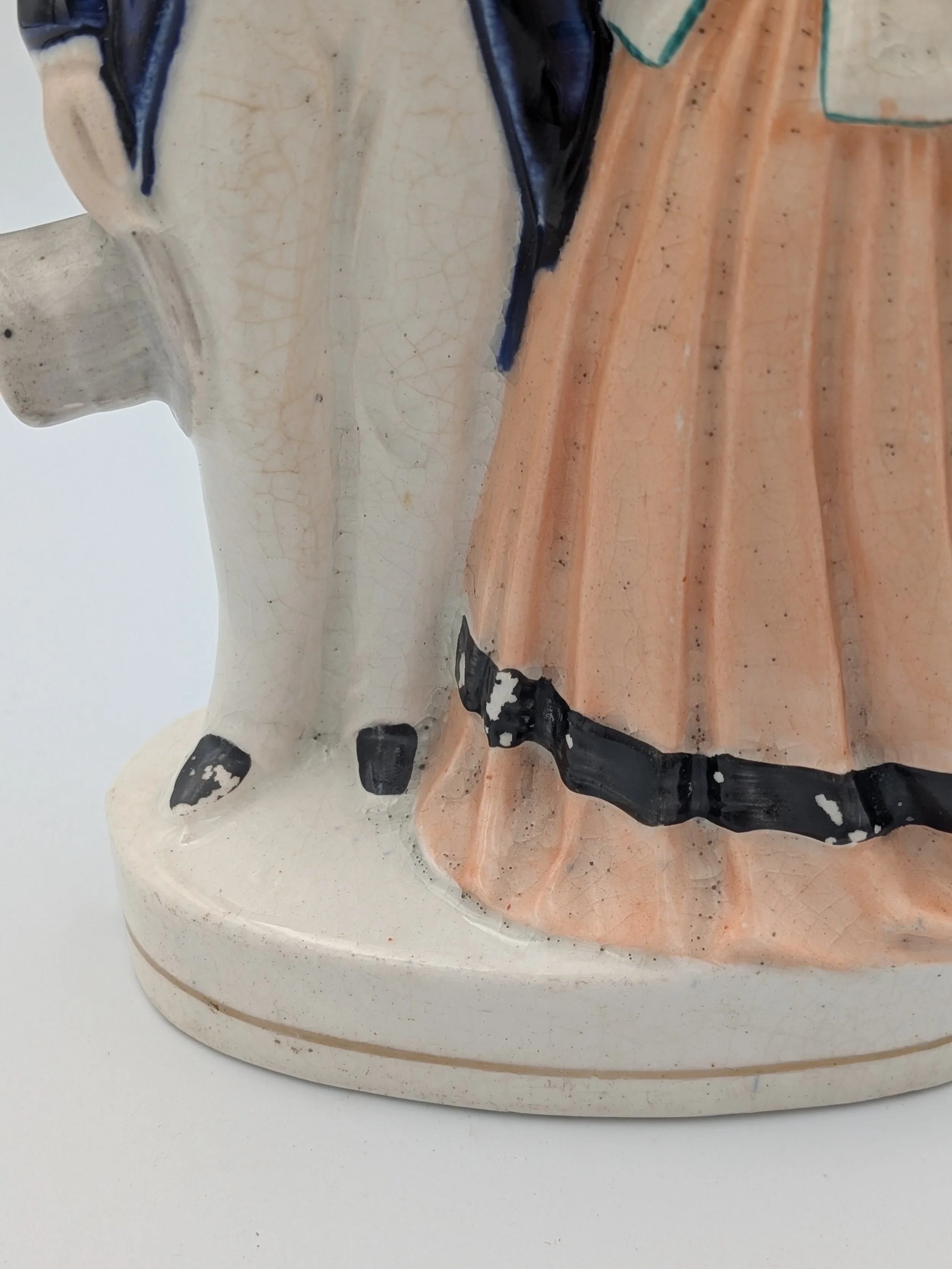 Image 11 of 20
Image 11 of 20

 Image 12 of 20
Image 12 of 20

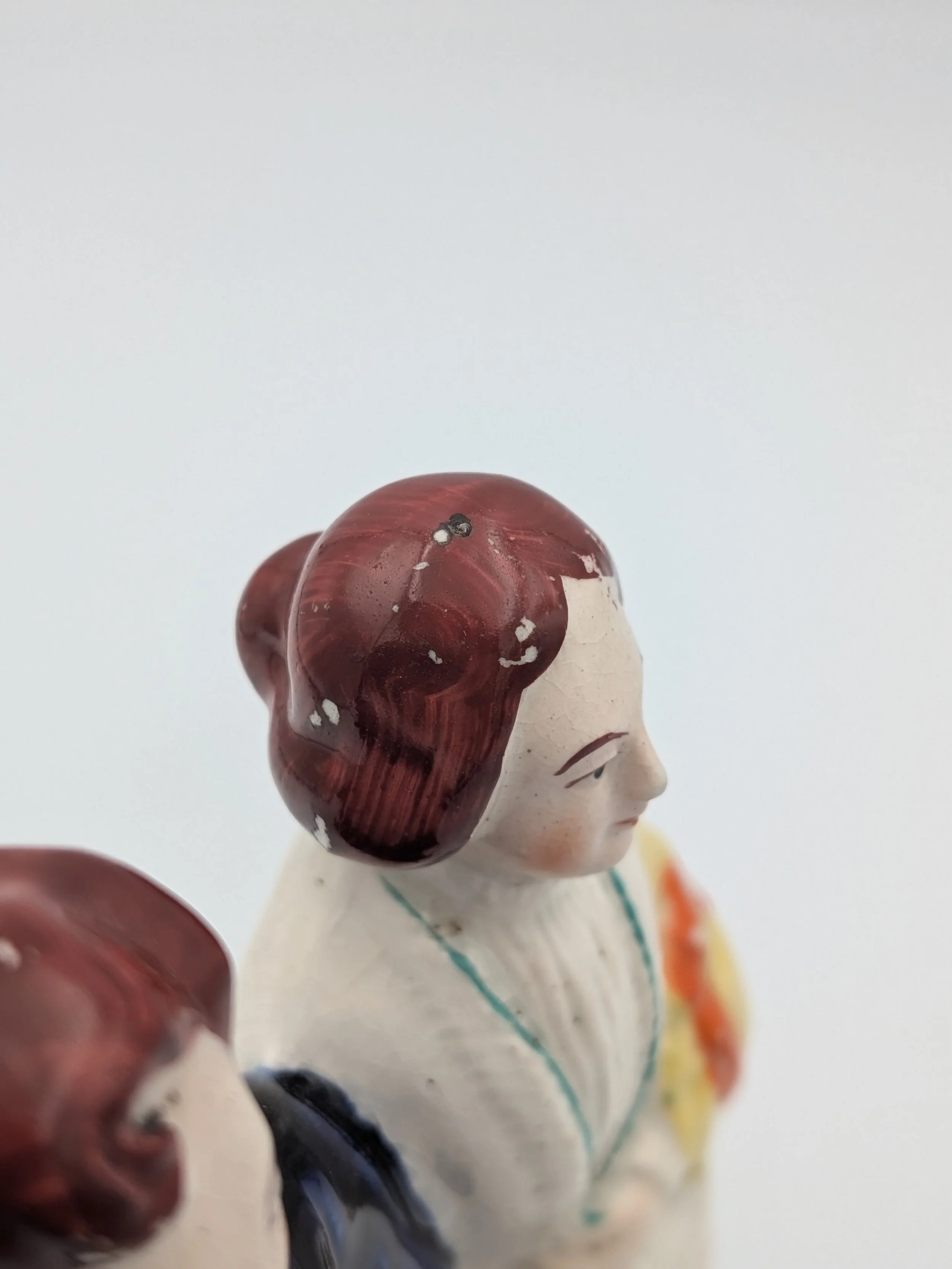 Image 13 of 20
Image 13 of 20

 Image 14 of 20
Image 14 of 20

 Image 15 of 20
Image 15 of 20

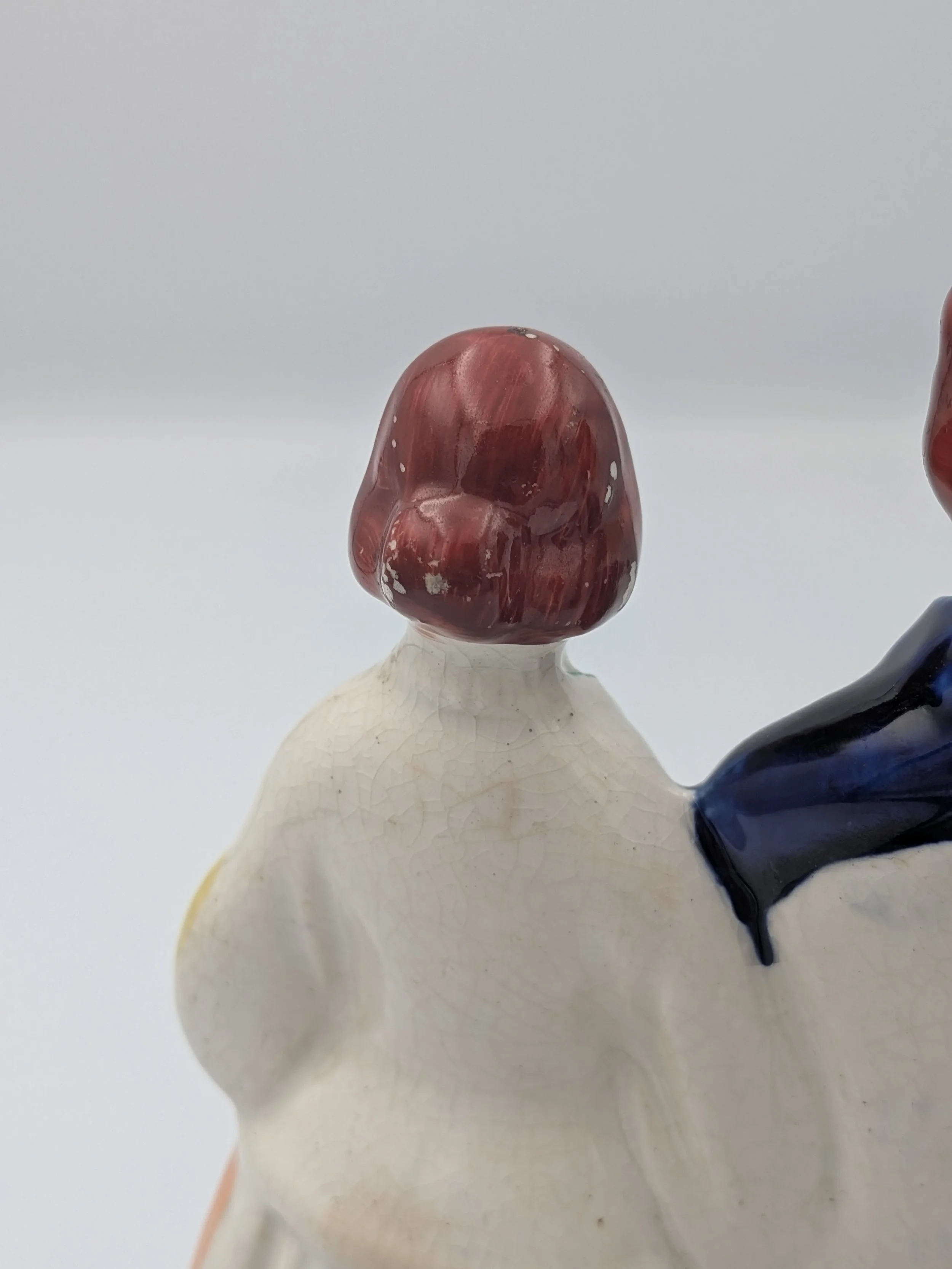 Image 16 of 20
Image 16 of 20

 Image 17 of 20
Image 17 of 20

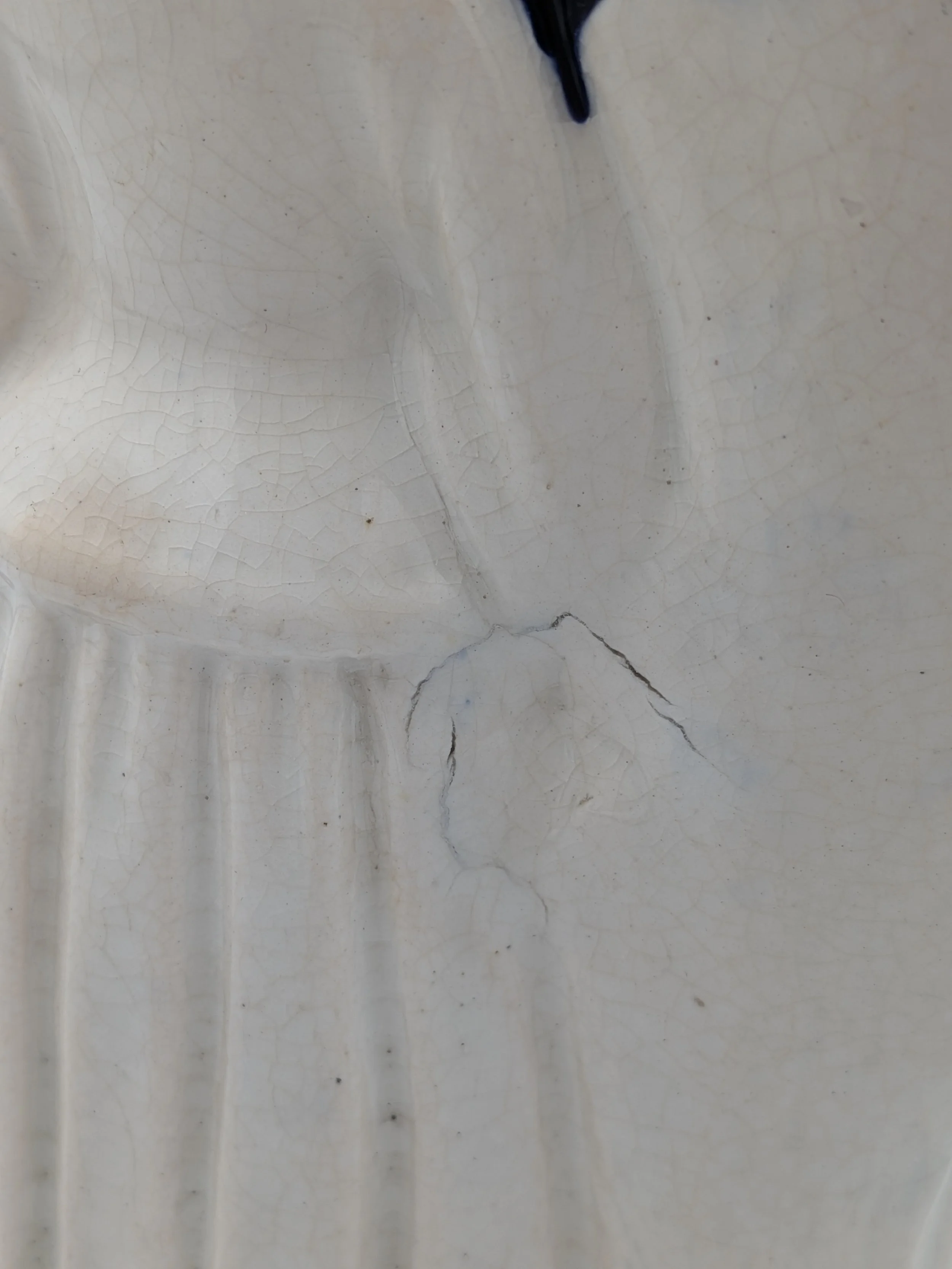 Image 18 of 20
Image 18 of 20

 Image 19 of 20
Image 19 of 20

 Image 20 of 20
Image 20 of 20





















Prince of Wales and Princess Alexandra of Denmark
A lovely Staffordshire figure made to celebrate the marriage of the Prince of Wales (who would later become King Edward VII) and Princess Alexandra of Denmark in 1863.
The Prince holds a top hat and wears a fine cobalt blue jacket, white trousers, a white waistcoat with a gilt watchchain and magenta buttons, a white shirt, and a white cravat decorated with orange spots. The princess wears a long peach-coloured skirt with black trim, a white jacket trimmed with green, with a yellow hat with orange ribbon on her arm.
The figure presents very well. There is some flaking to the enamel, particularly hair, orange ribbon, and black skirt trim. There is a small thumbprint firing flaw on the back of the figure (not visible when displayed). Notably, the bottom of the base is lost (again, not visible when displayed).
Reference: A. & N. Harding, Victorian Staffordshire Figures 1835 - 1875, Book 1, p. 200, fig. 671
Height: 7.5”
Date: c. 1863
A lovely Staffordshire figure made to celebrate the marriage of the Prince of Wales (who would later become King Edward VII) and Princess Alexandra of Denmark in 1863.
The Prince holds a top hat and wears a fine cobalt blue jacket, white trousers, a white waistcoat with a gilt watchchain and magenta buttons, a white shirt, and a white cravat decorated with orange spots. The princess wears a long peach-coloured skirt with black trim, a white jacket trimmed with green, with a yellow hat with orange ribbon on her arm.
The figure presents very well. There is some flaking to the enamel, particularly hair, orange ribbon, and black skirt trim. There is a small thumbprint firing flaw on the back of the figure (not visible when displayed). Notably, the bottom of the base is lost (again, not visible when displayed).
Reference: A. & N. Harding, Victorian Staffordshire Figures 1835 - 1875, Book 1, p. 200, fig. 671
Height: 7.5”
Date: c. 1863